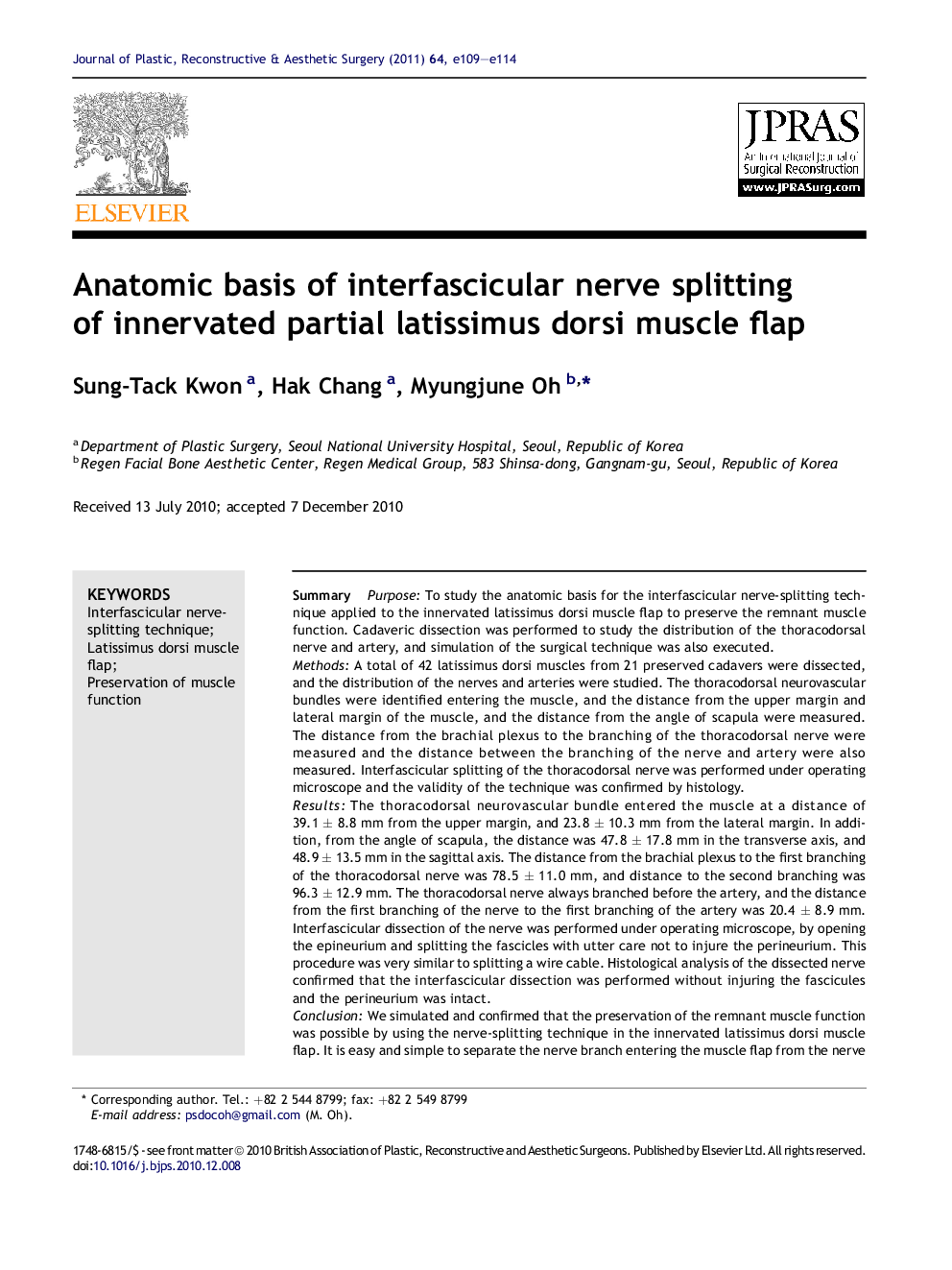| کد مقاله | کد نشریه | سال انتشار | مقاله انگلیسی | نسخه تمام متن |
|---|---|---|---|---|
| 4120861 | 1270379 | 2011 | 6 صفحه PDF | دانلود رایگان |

SummaryPurposeTo study the anatomic basis for the interfascicular nerve-splitting technique applied to the innervated latissimus dorsi muscle flap to preserve the remnant muscle function. Cadaveric dissection was performed to study the distribution of the thoracodorsal nerve and artery, and simulation of the surgical technique was also executed.MethodsA total of 42 latissimus dorsi muscles from 21 preserved cadavers were dissected, and the distribution of the nerves and arteries were studied. The thoracodorsal neurovascular bundles were identified entering the muscle, and the distance from the upper margin and lateral margin of the muscle, and the distance from the angle of scapula were measured. The distance from the brachial plexus to the branching of the thoracodorsal nerve were measured and the distance between the branching of the nerve and artery were also measured. Interfascicular splitting of the thoracodorsal nerve was performed under operating microscope and the validity of the technique was confirmed by histology.ResultsThe thoracodorsal neurovascular bundle entered the muscle at a distance of 39.1 ± 8.8 mm from the upper margin, and 23.8 ± 10.3 mm from the lateral margin. In addition, from the angle of scapula, the distance was 47.8 ± 17.8 mm in the transverse axis, and 48.9 ± 13.5 mm in the sagittal axis. The distance from the brachial plexus to the first branching of the thoracodorsal nerve was 78.5 ± 11.0 mm, and distance to the second branching was 96.3 ± 12.9 mm. The thoracodorsal nerve always branched before the artery, and the distance from the first branching of the nerve to the first branching of the artery was 20.4 ± 8.9 mm. Interfascicular dissection of the nerve was performed under operating microscope, by opening the epineurium and splitting the fascicles with utter care not to injure the perineurium. This procedure was very similar to splitting a wire cable. Histological analysis of the dissected nerve confirmed that the interfascicular dissection was performed without injuring the fascicules and the perineurium was intact.ConclusionWe simulated and confirmed that the preservation of the remnant muscle function was possible by using the nerve-splitting technique in the innervated latissimus dorsi muscle flap. It is easy and simple to separate the nerve branch entering the muscle flap from the nerve branch entering the remnant muscle without injury, which results in increasing the nerve length while preserving the muscle function of the donor site. Further, the distribution of the thoracodorsal neurovascular bundle was studied in 42 muscles, which can be used as a reference point during surgery. With this novel technique, preservation of the remnant muscle function is possible when using innervated muscle flaps, which can be applied in areas such as reconstruction of facial paralysis and reconstruction of the chest wall in Poland syndrome.
Journal: Journal of Plastic, Reconstructive & Aesthetic Surgery - Volume 64, Issue 5, May 2011, Pages e109–e114